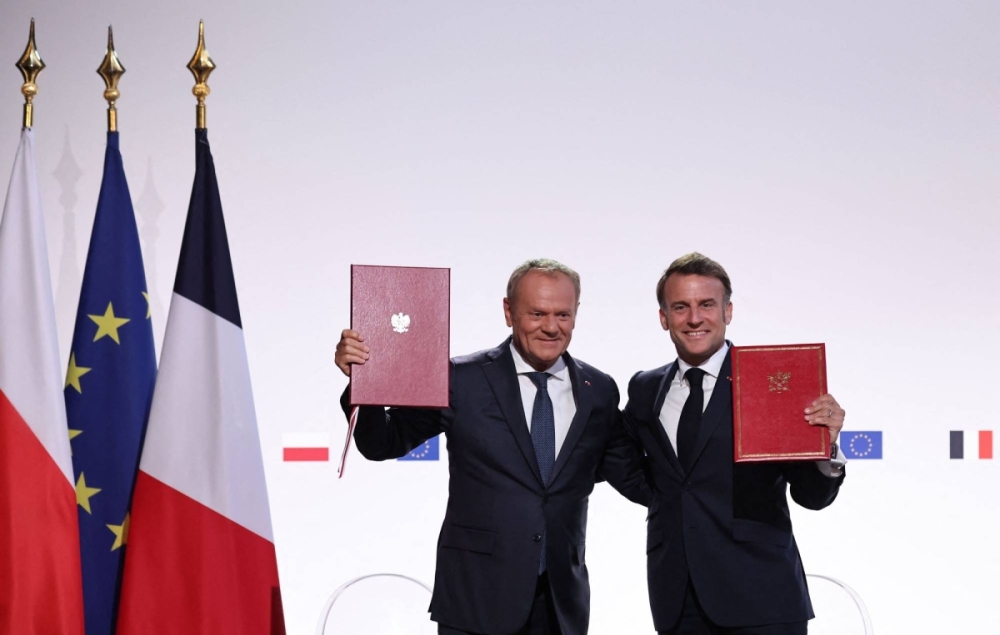
Poland is moving closer to securing an agreement with France that would see it integrated into the French nuclear deterrence umbrella. On May 9, Polish Prime Minister Donald Tusk announced that Poland had signed a historic treaty with French President Emmanuel Macron, known as the French-Polish Friendship and Strategy Pact. This agreement is expected to significantly enhance Poland’s defense capabilities and strengthen its military ties with France, particularly regarding nuclear protection.
Tusk hailed the treaty as a “groundbreaking” step for Poland’s security, highlighting its importance in a period of escalating geopolitical instability. The pact not only includes provisions for mutual military assistance in the event of an armed conflict but also outlines plans for expanded cooperation in the defense industry. The Polish government believes that this partnership will help bolster its defenses, particularly in light of the ongoing security concerns in Europe.
Why This Deal Matters
The timing of this agreement is crucial. Poland, which shares borders with several countries that have been sources of tension, including Russia and Belarus, has long sought to strengthen its military alliances. This move comes amid growing uncertainty over the future of U.S. military commitments, particularly with the shifting priorities of U.S. President Donald Trump’s administration. There are increasing concerns in Europe about Washington’s willingness to continue its support for Ukraine, especially as the war with Russia shows no signs of winding down.
For Poland, the treaty with France represents a shift toward a more independent defense strategy. By aligning with France’s nuclear deterrence capabilities, Poland aims to enhance its security without relying entirely on the uncertain future of U.S. involvement in European defense. This deal would put Poland under the protection of France’s nuclear shield, an important step given the region’s evolving security challenges.
Details of the Agreement
While the full details of the pact, particularly the specifics of the nuclear deterrence arrangements, are still largely confidential, it is clear that this agreement will have a long-term impact on Europe’s defense landscape. Poland’s alignment with France’s nuclear capabilities marks a shift away from its reliance on the U.S. and NATO for nuclear security. It also underscores Poland’s growing concerns over the geopolitical environment, which has become increasingly unpredictable in recent years.
The French-Polish Friendship and Strategy Pact comes with several provisions, including joint defense initiatives and greater coordination on military planning. One of the key elements of the agreement is the promise of mutual assistance in the event of an armed conflict, which strengthens Poland’s security posture in the face of growing tensions in Europe.
A New Chapter in European Defense Alliances
This agreement between Poland and France represents a further deepening of military ties in Europe, particularly as the U.S. becomes more selective in its global commitments. With this treaty, Poland solidifies its role in European security under the umbrella of French nuclear deterrence and strengthens its independence in an increasingly uncertain geopolitical environment.
The implications of this agreement are far-reaching. As Europe faces growing challenges from Russia, China, and other geopolitical factors, Poland’s decision to align itself more closely with France’s nuclear defense signals a shift toward more independent European defense capabilities, and away from over-reliance on the U.S. NATO framework.



